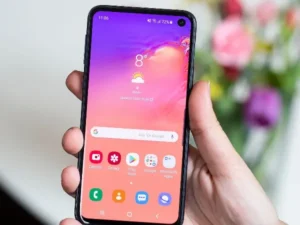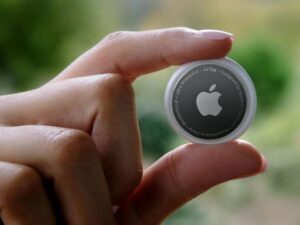Can Police Drones See In Your Home? The Truth Revealed

Police drones are becoming increasingly popular across the United States. They can be used for a variety of purposes, such as patrolling high-crime areas and helping with search-and-rescue missions. However, some people are concerned about whether or not police drones can see inside people’s homes. In this blog post, we will explore the truth that Can Police Drones See In Your House?
Contents
- 1 The Reality of Drones Seeing Inside Your Home
- 2 How Far Can A Drone Camera See?
- 3 Can Police Drones See In Your House?
- 4 Can Police Drones See Your House At Night?
- 5 Can Police Drones See Through Walls?
- 6 What Is A Law Enforcement Drone?
- 7 Can Drones See Through Walls?
- 8 Can Drones See Through Curtains?
- 9 Can Recreational And Commercial Drones See Through Curtains?
- 10 Can Drones Be Used For Surveillance?
- 11 Can Drones Hear Conversations?
- 12 Can Drones See Through Windows?
- 13 Can Infrared Camera Drones See Inside Your Home?
- 14 How Do You Tell If A Drone Is Watching You?
- 15 Methods To Find Out A Drone Nearby Spying On You
- 16 What To Do If A Drone Is Following You?
- 17 How Do I Protect My Home From Drones?
- 18 Conclusion:
- 19 FAQs:
The Reality of Drones Seeing Inside Your Home
Can Police Drones See In Your House? The short answer is no. While police drones are equipped with powerful cameras and can be used to monitor large areas, they cannot see directly into people’s homes. The reason for this is due to the existence of privacy laws that prevent government agencies from spying on citizens without a warrant or other legal justification. These laws also apply to drone operators who must get permission before flying over any property.
It’s important to note that while police drones are generally not allowed to peek into people’s homes, they can still be used to monitor the surrounding area. This means that drones can be used to keep an eye out for a suspicious activity or potential threats, such as a burglary, in the area.
Auto Amazon Links: No products found. No products found. http_request_failed: A valid URL was not provided. URL: https://ws-na.amazon-adsystem.com/widgets/q?SearchIndex=All&multipageStart=0&multipageCount=20&Operation=GetResults&Keywords=Drones|SAMSUNG+Galaxy+S23+Ultra+Cell+Phone|SAMSUNG+Galaxy+S23+Ultra+5G|Galaxy+s23|Samsung+Galaxy+s23&InstanceId=0&TemplateId=MobileSearchResults&ServiceVersion=20070822&MarketPlace=US Cache: AAL_5cff34891bc9d00d43cd68843b5102a6
How Far Can A Drone Camera See?
The camera on a police drone depends on the model, but they typically have a range of around 1-2 miles. This means that they can capture images of a wide area, but they won’t be able to see into people’s homes or even their backyards.
Can Police Drones See In Your House?
Can Police Drones See In Your House? In short, no. Police drones are not able to see into people’s homes or even their backyards due to existing privacy laws. While police drones can be used to monitor the surrounding area, they cannot directly see inside people’s homes or other private property. However, that doesn’t mean that police drones can’t be used for other purposes, such as monitoring large gatherings or search-and-rescue operations.
Can Police Drones See Your House At Night?
No, police drones are not able to see into people’s homes at night. All drone cameras have a limited range and can only capture images during the day. Additionally, some police drones may be equipped with infrared cameras which can capture images in low light conditions, but these are still limited to the range of the drone and can only capture images from a certain distance away.

Can Police Drones See Through Walls?
No, police drones are not able to see through walls. Drone cameras rely on visible light in order to capture images, which means that they cannot see through obstacles such as walls or other barriers.
What Is A Law Enforcement Drone?
A law enforcement drone is a type of unmanned aerial vehicle (UAV) that is used by police and other law enforcement agencies to monitor large areas, search for suspects, or assist in search-and-rescue operations. Law enforcement drones usually come equipped with powerful cameras and other sensors which allow them to capture images and gather data from the ground.
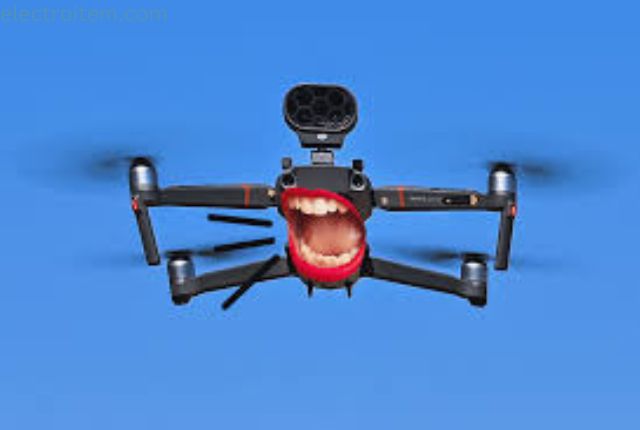
Can Drones See Through Walls?
No, drones are not able to see through walls. Drone cameras rely on visible light in order to capture images, which means that they cannot see through obstacles such as walls or other barriers. However, some advanced drone models may be able to detect heat signatures, which could allow them to detect movement.
Auto Amazon Links: No products found. No products found. http_request_failed: A valid URL was not provided. URL: https://ws-na.amazon-adsystem.com/widgets/q?SearchIndex=All&multipageStart=0&multipageCount=20&Operation=GetResults&Keywords=SAMSUNG+Galaxy+S23+Ultra+Cell+Phone|Galaxy+s23|Samsung+Galaxy+s23|Can+Police+Drones+See+In+Your+Home%3F+The+Truth+Revealed|SAMSUNG+Galaxy+S23+Ultra+5G&InstanceId=0&TemplateId=MobileSearchResults&ServiceVersion=20070822&MarketPlace=US Cache: AAL_2fb33d61d52b3dc3e1e11057516d0446
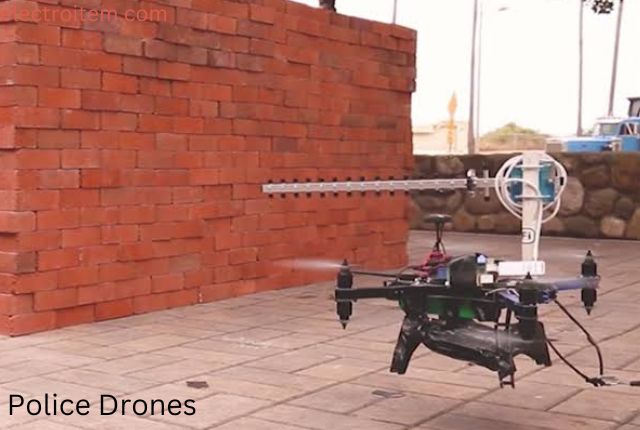
Can Drones See Through Curtains?
Unfortunately, that’s not possible. Drones can’t see through curtains or any other opaque materials. They use their cameras to take pictures and videos from the sky, but their cameras can only capture what is visible in their field of view. The only way drones could possibly see through curtains would be if they had infrared or thermal imaging capabilities, which would be highly unusual.

Can Recreational And Commercial Drones See Through Curtains?
Generally speaking, recreational and commercial drones cannot see through curtains. However, some drones may be equipped with thermal imaging cameras or other advanced imaging technology which can penetrate thin materials such as curtains. If a drone operator is using such technology, it may be possible for them to see through certain types of curtains. It is important to remember that drone operators must adhere to all applicable federal, state, and local laws and regulations when operating a drone.
Can Drones Be Used For Surveillance?
Yes, drones can be used for surveillance. They can be equipped with cameras and sensors that allow them to capture images and record data from a distance. Drones can be used to monitor large areas, observe events and activities, and even detect changes in the environment. They are becoming increasingly popular as a cost-effective and efficient way to collect information

Can Drones Hear Conversations?
Generally, no – drones are not able to hear conversations. However, if the drone is equipped with certain types of sensors, it may be able to pick up certain sounds, such as loud noises, from a distance. It is important to remember that drones can be used to record audio, but they are not designed to actively listen in on conversations.
Can Drones See Through Windows?
Unfortunately, drones cannot see through windows. However, some drones are equipped with infrared cameras which can detect the heat from objects on the other side of the window. This technology is not able to provide true visibility through windows, but it can help to detect the presence of people or objects that are in the vicinity of the window.

Can Infrared Camera Drones See Inside Your Home?
Infrared camera drones are not able to see inside your home, as infrared cameras are not able to penetrate walls and windows. However, it is possible to use infrared cameras to view the outside of your home, such as the roof, walls, and other exterior features. In some cases, infrared cameras may be able to pick up heat signatures from inside the home, but this is rare and requires the drone to be very close to the home. For more information about infrared cameras and drones, you can visit the website of the manufacturer.
How Do You Tell If A Drone Is Watching You?
If you suspect a drone may be watching you, there are a few ways to tell. First, look for any signs of a drone in the sky, such as a buzzing sound or strange movements. Additionally, you can try to look for a reflection from the sun off of the drone’s camera lens. Finally, if you have access to any drone-detection apps or software, you can use these tools to help identify if any drones are in the area.
Methods To Find Out A Drone Nearby Spying On You
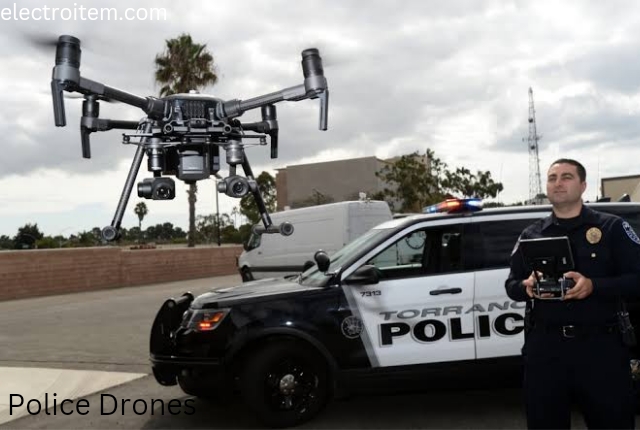
Radio:
One way to detect a drone spying on you is to use an app-based radio frequency (RF) detector. This type of detector will scan the RF spectrum and alert you to any suspicious signals. You can also use a radio scanner to listen to any drones flying in your area, as these drones use radio frequencies to communicate with their operators. Additionally, you can purchase radio equipment that specifically detects drones, such as a drone jammer or RF jammer. This will interfere with the drone’s communications and should make it easier to locate. Finally, if you are able to locate the drone, take a picture of it and report it to local authorities.
Apps:
One way to detect a drone that may be spying on you is to use an app like Drone watcher. This app uses advanced algorithms to detect, identify and track nearby drones. It can also be customized to provide alerts when a drone is detected in a certain area. Additionally, it can display a visual overlay of the drone’s flight path and provide you with the type of drone and the operator’s details. With this app, you can quickly identify any drones that may be invading your privacy and take the appropriate steps to protect yourself.
Looking Out for Lights:
One way to determine whether a drone is nearby and potentially spying on you is to look out for any unusual lights in the sky. This could be anything from a bright, flashing light to a steady, faint light. If you spot any lights that look out of the ordinary, you can take a closer look to see if they are associated with a drone. Additionally, you may be able to hear the sound of a drone’s propellers if it is close enough. Be sure to pay attention to any suspicious activity in your area.
Drone Sound:
There are several ways to detect a drone that could be spying on you. One way is to listen for a buzzing or humming sound. Drones typically emit distinct sounds that can be heard from a distance. You can also search for a line of sight to the drone, or look for any suspicious shadows or reflections that could indicate its presence. If you have access to a drone detector device, that can be used to help detect drones in the area. Additionally, some drones are equipped with GPS tracking, so you can use an app or GPS monitoring system to track and pinpoint the exact location of the drone.
What To Do If A Drone Is Following You?
If you ever feel like a drone is following you, the first thing to do is to remain calm and keep your distance from the drone. You can then contact the local police or aviation authority for help. Make sure you have as much information as possible about the drone’s location, size, and type. If it is safe to do so, you can also try to take a photo or video of the drone to assist with the investigation. Finally, you can consider using anti-drone technology to disrupt the drone’s signal and make it stop following you.
How Do I Protect My Home From Drones?
Protecting your home from drones is an important concern for many people. There are several steps you can take to protect your home from unwanted drone intrusions.
The most effective way to protect your home from drones is to install anti-drone technology such as a drone detection system. These systems can detect drones in the area and alert you to their presence. They may also be able to jam the drone’s communications and stop it from entering your property.
You can also set up physical barriers to prevent drones from entering your property. Netting, mesh, or a fence are all good options.
Additionally, you can use a jammer to disrupt the drone’s signal and prevent it from recording or transmitting data. However, it’s important to note that using a jammer may be illegal in some areas, so check your local laws before using one.
Finally, you can report any drones that are bothering you to your local police department or aviation authority. They can help identify the drone and potentially take action to stop it from flying over your property.
Hopefully, these suggestions will help you protect your home from unwanted drones.
Conclusion:
In conclusion, although police drones can be used to monitor certain public spaces, they cannot see into your home without prior permission. This is due to the Fourth Amendment of the United States Constitution, which protects citizens from unreasonable searches and seizures. Although police drones are becoming increasingly prevalent and have been used by some law enforcement agencies, their use is still subject to legal regulation and must abide by the Fourth Amendment. Ultimately, police drones can be a useful tool for law enforcement, while still protecting the privacy of citizens. I hope you got your answer to Can Police Drones See In Your House?
FAQs:
How do police use drones?
Police departments around the world are increasingly utilizing drones as an effective tool to help keep citizens safe. Drones can be used to monitor large areas, investigate crime scenes, and even help locate missing persons.
How long can a police drone fly?
Police drones vary in range and flight time depending on the type of drone. Generally, most police drones can fly for 25-30 minutes on a single charge. Some police drones have a range of up to 5 miles depending on the terrain and other environmental factors.
Related: Altus Cam HD Drone Full Guide




